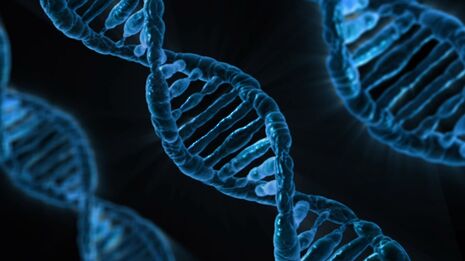Varsity explains: How do ancestry tests work?

When Spotify and Ancestry.com announced their new partnership last month, they kicked off a controversial debate. Users can input regions from their ancestry test to Spotify, to receive a “DNA-curated” playlist. The announcement drove wide-ranging discussions on the relationship between genetics, culture, and music. So, how do ancestry DNA tests work?
In the saliva sample you provide are some of your cells, each containing a complete copy of your genome – a full copy of your personal blueprint. Various companies extract data from these cells differently. One option is sequencing, which converts the chemical code into a corresponding digital string of the letters A, T, C, and G, representing nucleotides. 23andMe compares this to a library of reference genomes, to find the percentage of genomic stretches that match genomes from different countries. Rather than compare whole chunks of genome, Ancestry.com looks at a few thousand specific sites that are known to vary between people. This means it’s not necessary to sequence your whole genome: simpler test for just these sites is enough. These sites can then be compared to the equivalent sites from reference genomes, to find the best matches.
While these algorithmic approaches are valid, a major limitation is the availability of reference genomes. For example, a scarcity of Native American genomes means the algorithms can’t differentiate between different tribes. Beyond these technical limitations, the promise of genetically uncovering ancestry has fuelled misconceptions about defining race with DNA. Of course, the DNA-testing companies are not based on these ideas, but the association has brought old, discredited racial theories back into the light. The crux of the issue is that the social concept of race simply does not match up to humans’ genetic differences across different world regions. Interesting though DNA ancestry tests may be, they provide genetic, not cultural information – and it’s important to remember that.
 News / Cambridge launches plan to bridge ‘town and gown’ divide27 October 2025
News / Cambridge launches plan to bridge ‘town and gown’ divide27 October 2025 Arts / Reflections on the Booker Prize 202528 October 2025
Arts / Reflections on the Booker Prize 202528 October 2025 News / SU referendums heat up as campaigners claim intervention29 October 2025
News / SU referendums heat up as campaigners claim intervention29 October 2025 News / SU announces vote on NUS affiliation17 October 2025
News / SU announces vote on NUS affiliation17 October 2025 Film & TV / Finding space in Cambridge for the love of filmmaking29 October 2025
Film & TV / Finding space in Cambridge for the love of filmmaking29 October 2025









